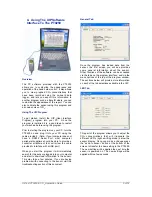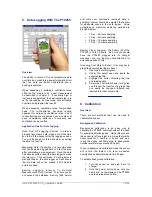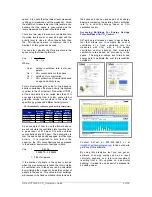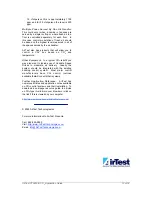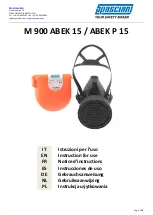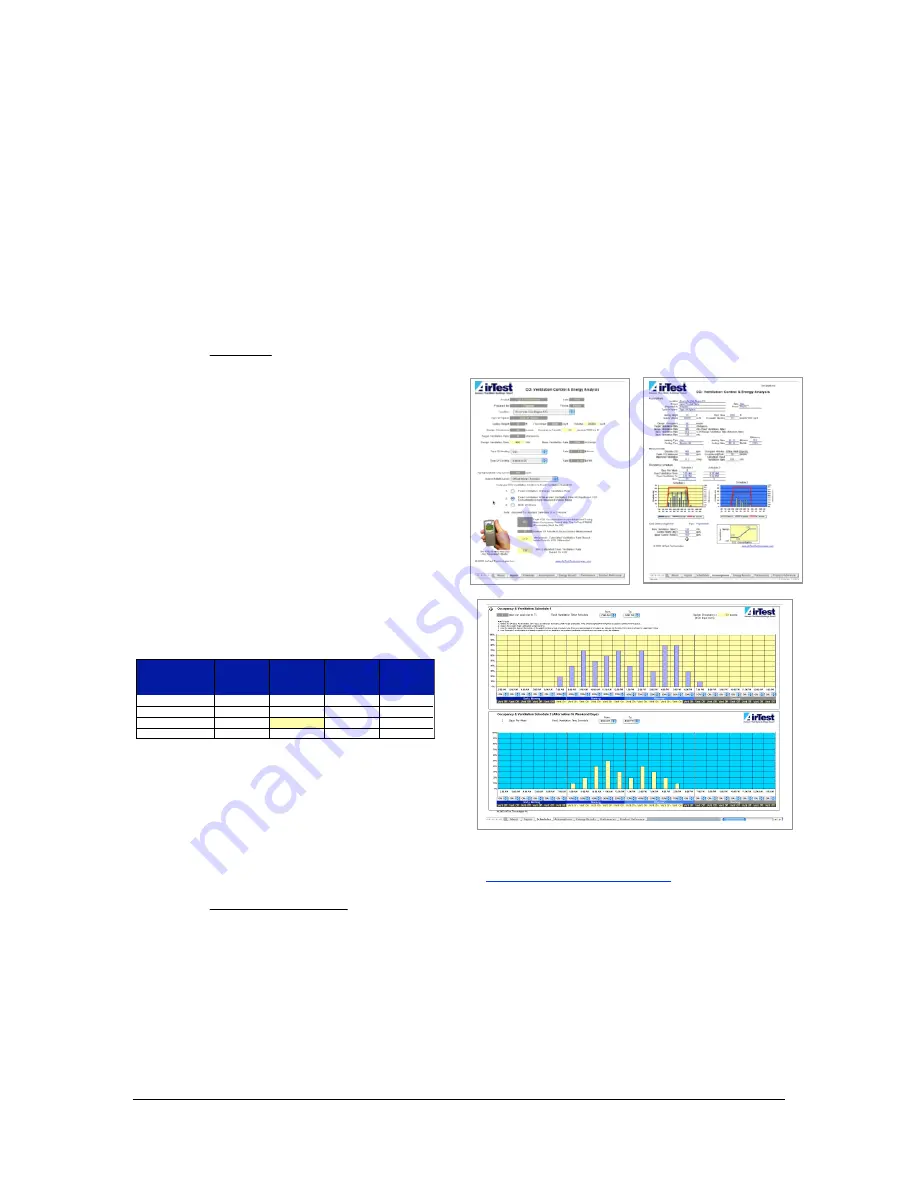
AirTest PT9250 & CO
2
Application Guide
9 of
12
space. Also note that the lowest level measured
is 400 ppm (measured over the weekend). Given
the stability of measurements at this level we can
assume that the space is unoccupied and the
levels measured are typical of outside levels.
There are two ways to measure ventilation rate.
If outside levels are at or near 400 ppm and the
activity level is close to office type activity then
the CO
2
/cfm-per-person conversion chart in
Section 3 of this guide can be used.
You can also calculate the cfm-per-person in the
space using the following formula:
Vop
= N
Cs – Co
Where:
Vop =
outdoor ventilation rate in cfm-per-
person
Cs =
CO
2
concentration in the space
Co =
outside CO
2
concentration
N
=
CO
2
production of individuals based
on age and activity level.
For most calculations the value for N is based on
adults undertaking office type activity (highlighted
in yellow in the chart below). Production Of
CO
2
at the same activity level varies less than 10%
over ages ranging from 6 to 65+ years old but
guideline values are provided in the table for
specific age groups and different activity levels.
As an example of how to use the formula above,
we will calculate the ventilation rate resulting from
a peak level of 675 ppm CO
2
when outside
concentrations are 400 ppm. The assumption is
that the space has adults engaged in office-type
activity. It is important to note that in the
equation, the CO
2
concentrations are expressed
in the decimal equivalent of parts per million.
Vop
= 0.0106
0.000675 – 0.000400
= 3 8.5 cfm/person
If the number of people in the space is known
when the measurement is taken the total outside
air ventilation rate to the space can be calculated
by multiplying the occupancy times the number of
people in the space. This value in most buildings
will represent the fixed ventilation rate provided to
the space and can be used as part of an energy
analysis comparing the existing fixed ventilation
rate to a control strategy based on CO
2
ventilation control.
Accessing Buildings For Energy Savings
Potential Based On CO
2
Control:
AirTest has just release an easy to use software
tool that allows you to compare the cost of
ventilation at a fixed ventilation rate (as
measured with CO
2
), with a CO
2
based
ventilation control strategy that modulates
ventilation rates based on occupancy in the
space. The program utilizes local climatic and
energy data to estimate the cost to precondition
outside air.
Contact AirTest at 888-855-8880 or at
info@AirTestTechnologies.com
to find out how to
get a coy of this software.
By using this predictive tool you can get an
estimate of energy savings and as a result
calculate payback and return-on-investment
resulting from a CO
2
upgrade on a particular
building. It is ideal to use as part of a proposal to
a building owner.
Age
Sleeping /
Resting
Sitting /
Standing
(Office)
Light Work
(Walking)
Heavy
Work
(Exercise)
1 - 5 years
0.0050
0.0060
0.0127
0.0201
6 - 11 years
0.0094
0.0112
0.0236
0.0375
12 - 65 years
0.0088
0.0106
0.0223
0.0353
65 + years
0.0079
0.0094
0.0198
0.0314
CO
2
Production For Various Ages & Activity Levels (cfm)





